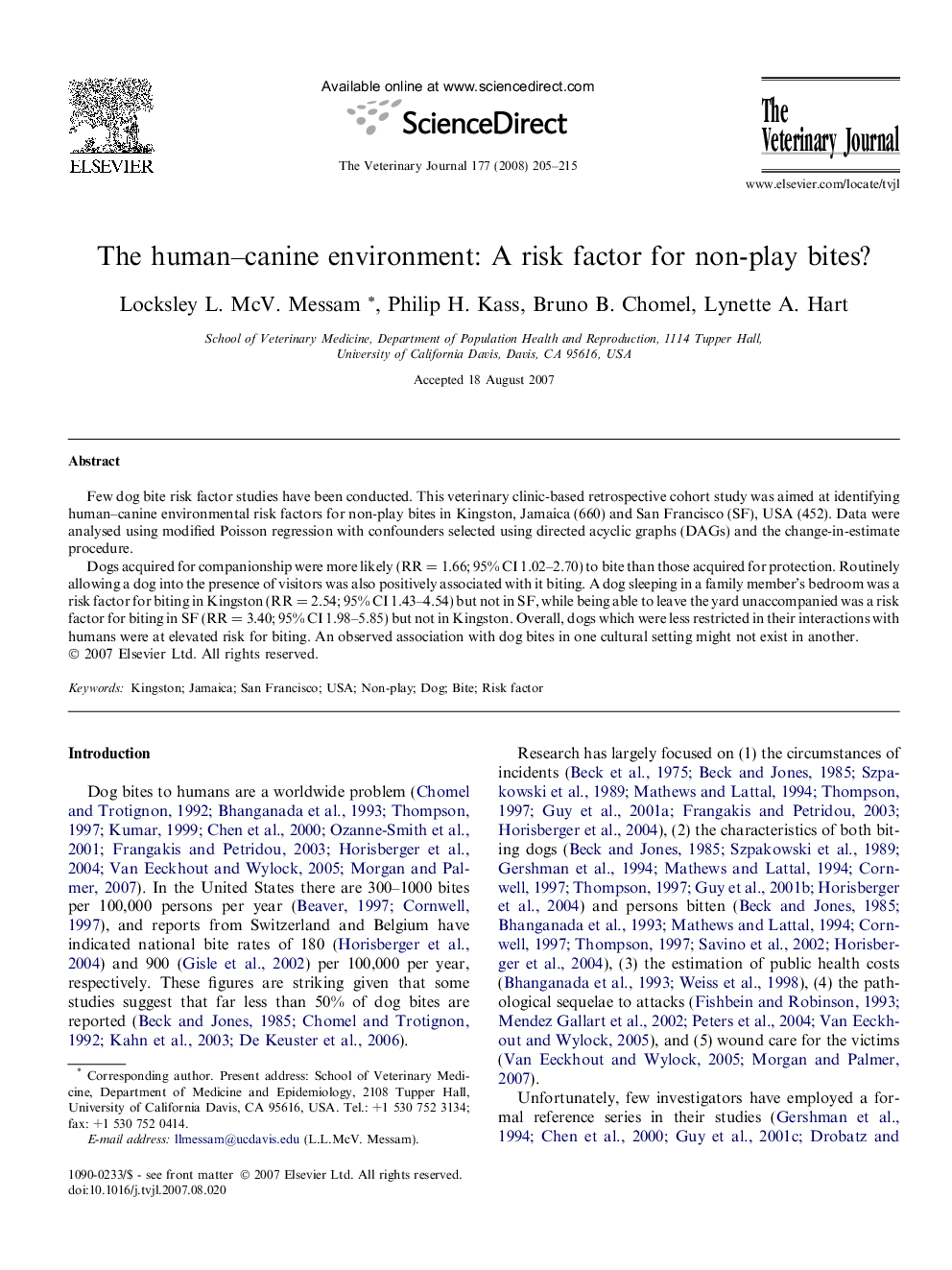| Article ID | Journal | Published Year | Pages | File Type |
|---|---|---|---|---|
| 2466008 | The Veterinary Journal | 2008 | 11 Pages |
Few dog bite risk factor studies have been conducted. This veterinary clinic-based retrospective cohort study was aimed at identifying human–canine environmental risk factors for non-play bites in Kingston, Jamaica (660) and San Francisco (SF), USA (452). Data were analysed using modified Poisson regression with confounders selected using directed acyclic graphs (DAGs) and the change-in-estimate procedure.Dogs acquired for companionship were more likely (RR = 1.66; 95% CI 1.02–2.70) to bite than those acquired for protection. Routinely allowing a dog into the presence of visitors was also positively associated with it biting. A dog sleeping in a family member’s bedroom was a risk factor for biting in Kingston (RR = 2.54; 95% CI 1.43–4.54) but not in SF, while being able to leave the yard unaccompanied was a risk factor for biting in SF (RR = 3.40; 95% CI 1.98–5.85) but not in Kingston. Overall, dogs which were less restricted in their interactions with humans were at elevated risk for biting. An observed association with dog bites in one cultural setting might not exist in another.
